Abstract
Purpose
The purpose of this research was to evaluate the shear bond strength between zirconia core and veneer ceramic after surface treatment.
Material and methods
Zirconia cores (N = 40, n = 10, 10 mm×10 mm×3 mm) were fabricated according to the manufacturers’ instructions and ultrasonically cleaned. The veneering ceramics (thickness 3 mm) were built and fired onto the zirconia core materials. Four groups of specimens with different surface treatment were prepared. Group I: without any pretreatment, Group II: treated with sandblasting, Group III: treated with liner, Group IV: treated with sandblasting and liner. The shear bond strength was tested in a universal testing machine. Data were compared with an ANOVA and Scheffe ′ post hoc test (P = .05).
Go to : 
REFERENCES
1.Du ¨ ndar M., Ozcan M., Go ¨kc¸e B., Co ¨mlekog ̆lu E., Leite F., Valandro LF. Comparison of two bond strength testing methodologies for bilayered all-ceramics. Dent Mater. 2007. 23:630–6.
2.Al-Dohan HM., Yaman P., Dennison JB., Razzoog ME., Lang BR. Shear strength of core-veneer interface in bilayered ceramics. J Prosthet Dent. 2004. 91:349–55.

3.Daftary F.., Donovan T. Effect of four pretreatment techniques on porcelain-to-metal bond strength. J Prosthet Dent. 1986. 58:535–40.

4.Kelly JR. Clinically relevant approach to failure testing of all-ceramic restorations. J Prosthet Dent. 1999. 81:652–61.

5.Braga RR., Ballester RY., Daronch M. Influence of time and adhesive system on the extrusion shear strength between feldspathic porcelain and bovine dentin. Dent Mater. 2000. 16:303–10.

6.Derand T., Molin M., Kvam K. Bond strength of composite luting cement to zirconia ceramic surfaces. Dent Mater. 2005. 21:1158–62.

7.Du ¨ndar M., Ozcan M., Co ¨mlekoglu E., Gu ¨ngo ¨r MA., Artunc¸ C. Bond strengths of veneering ceramics to reinforced ceramic core materials. Int J Prosthodont. 2005. 18:71–2.
8.Aboushelib MN., Kleverlaan CJ., Feilzer AJ. Microtensile bond strength of different components of core veneered all-ceramic restorations. Part II: Zirconia veneering ceramics. Dent Mater. 2006. 22:857–63.
9.Aboushelib MN., de Jager N., Kleverlaan CJ., Feilzer AJ. Microtensile bond strength of different components of core veneered all-ceramic restorations. Dent Mater. 2005. 21:984–91.

10.Borges GA., Sophr AM., de Goes MF., Sobrinho LC., Chan DC. Effect of etching and airborne particle abrasion on the microstructure of different dental ceramics. J Prosthet Dent. 2003. 89:479–88.

11.White SN., Miklus VG., McLaren EA., Lang LA., Caputo AA. Flexural strength of a layered zirconia and porcelain dental all-ceramic system. J Prosthet Dent. 2005. 94:125–31.

12.Sundh A., Molin M., Sjo ¨gren G. Fracture resistance of yttrium oxide partially-stabilized zirconia all-ceramic bridges after veneering and mechanical fatigue testing. Dent Mater. 2005. 21:476–82.

13.Guazzato M., Albakry M., Ringer SP., Swain MV. Strength, fracture toughness and microstructure of a selection of all-ceramic materials. Part II. Zirconia-based dental ceramics. Dent Mater. 2004. 20:449–56.

14.Sundh A., Sjo ¨gren G. A comparison of fracture strength of yttrium-oxide- partially-stabilized zirconia ceramic crowns with varying core thickness, shapes and veneer ceramics. J Oral Rehabil. 2004. 31:682–8.

15.Anusavice KJ., Dehoff PH., Fairhurst CW. Comparative evaluation of ceramic-metal bond tests using finite element stress analysis. J Dent Res. 1980. 59:608–13.
Go to : 
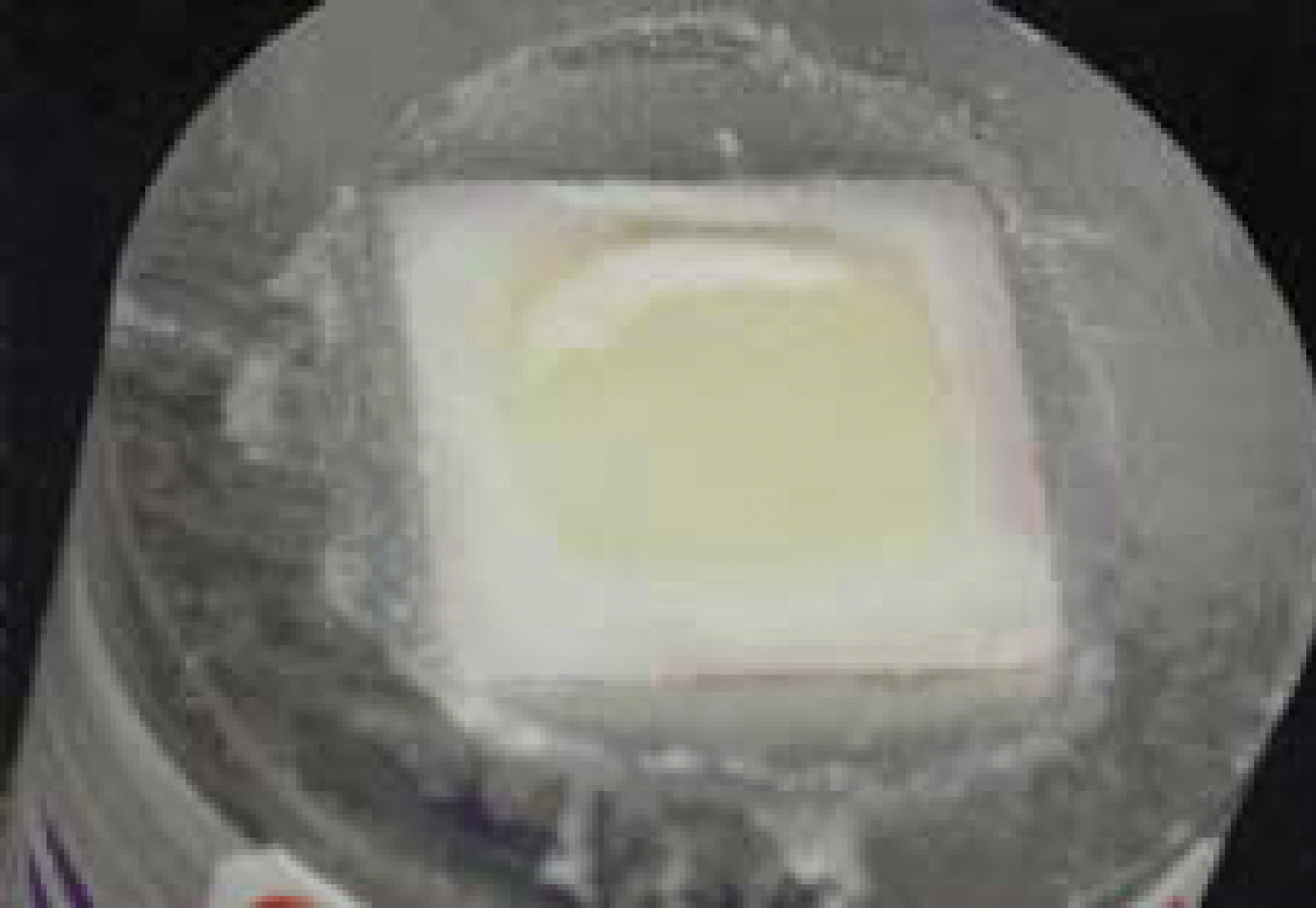 | Fig. 6.View of a debonded veneered ceramic specimen. Failure occurred in porcelain and core veneer interface. |
Table I.
Mean of fracture strength and standard deviation (MPa)
Table II.
Failure pattern
| Group 1 | Group 2 | Group 3 | Group 4 | |
|---|---|---|---|---|
| Failure | 100% | 100% | 80% | 60% |
| pattern | interfacial | Interfacial | interfacial | interfacial |
| 20% | 40% | |||
| ceramic | ceramic | |||
| cohesive | cohesive |
Table III.
Result of one-way ANOVA for shear bond strengths
| Sum of squares | Mean square | df | F value | P value | |
|---|---|---|---|---|---|
| Between groups | 17.221 | 5.74 | 3 | 3.481 | .026∗ |
| Within groups | 59.373 | 1.649 | 36 | ||
| Total | 76.594 | 39 |




 PDF
PDF ePub
ePub Citation
Citation Print
Print


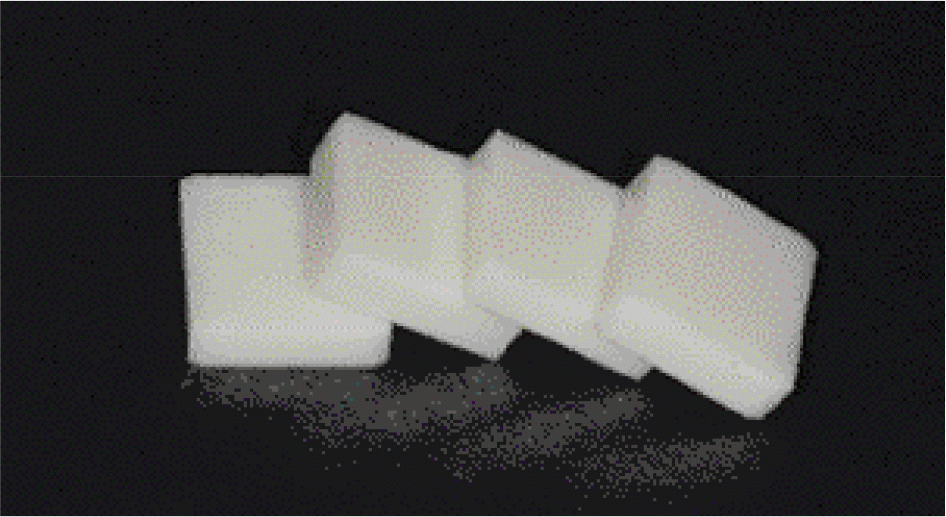
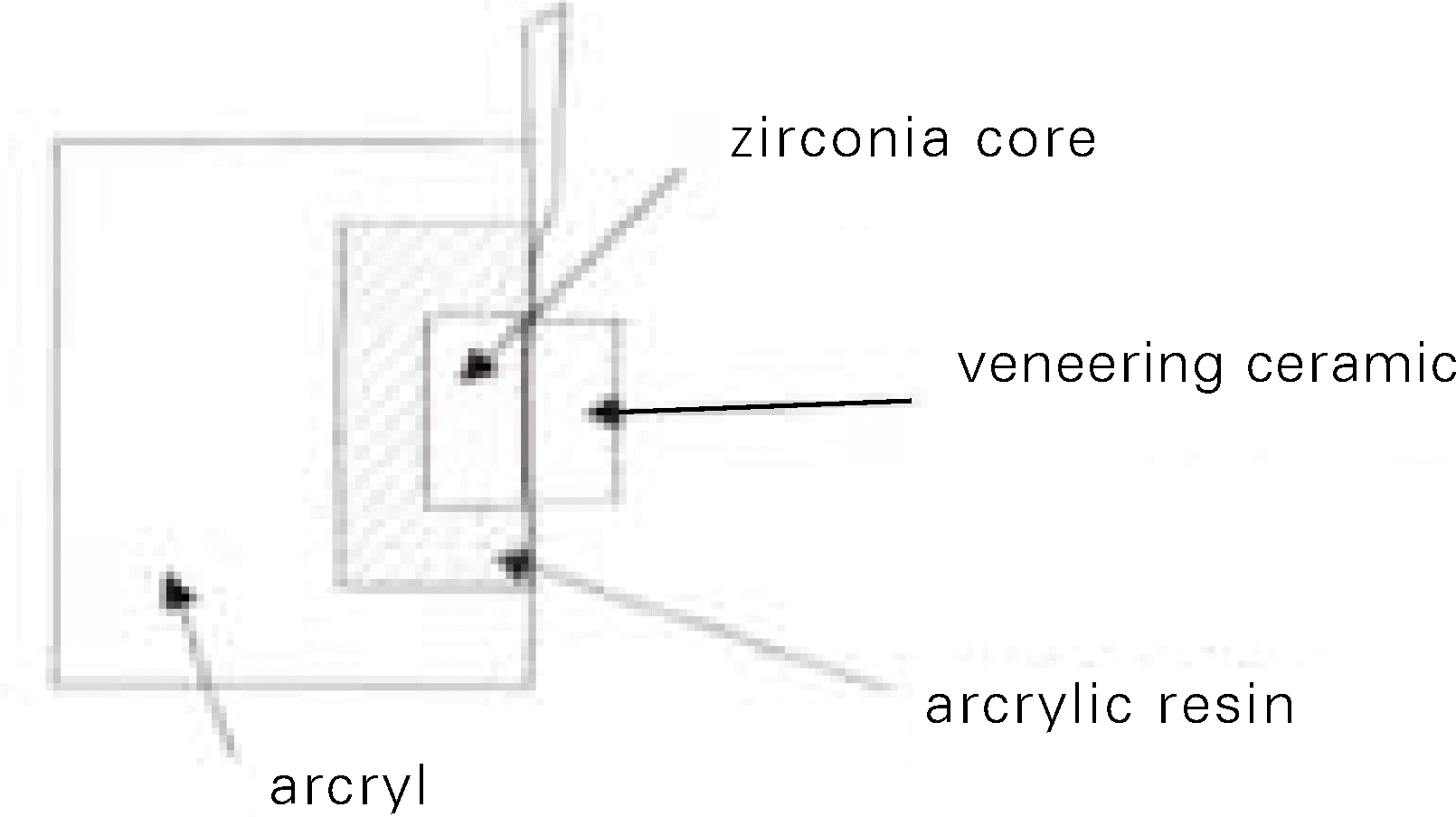
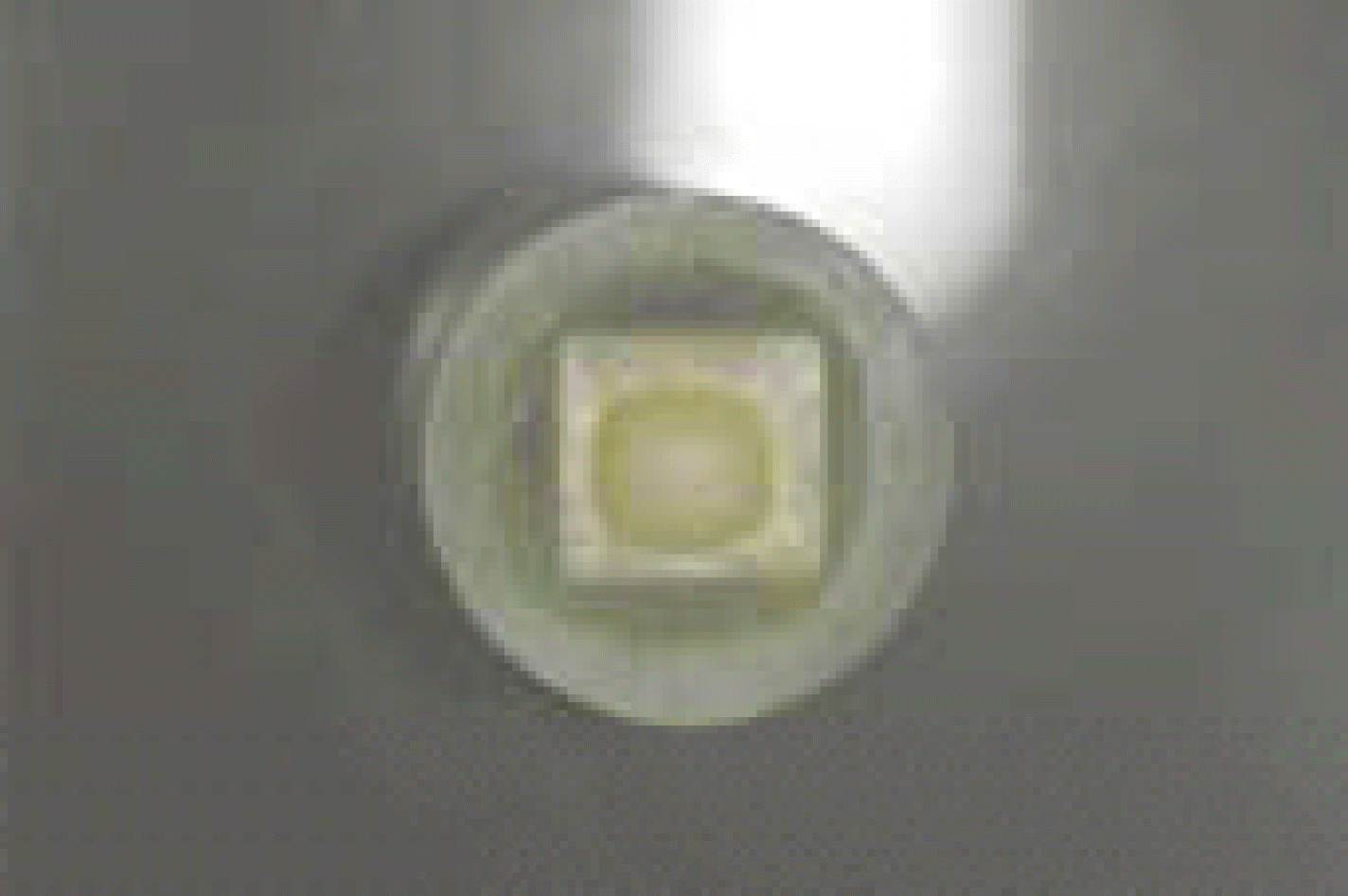
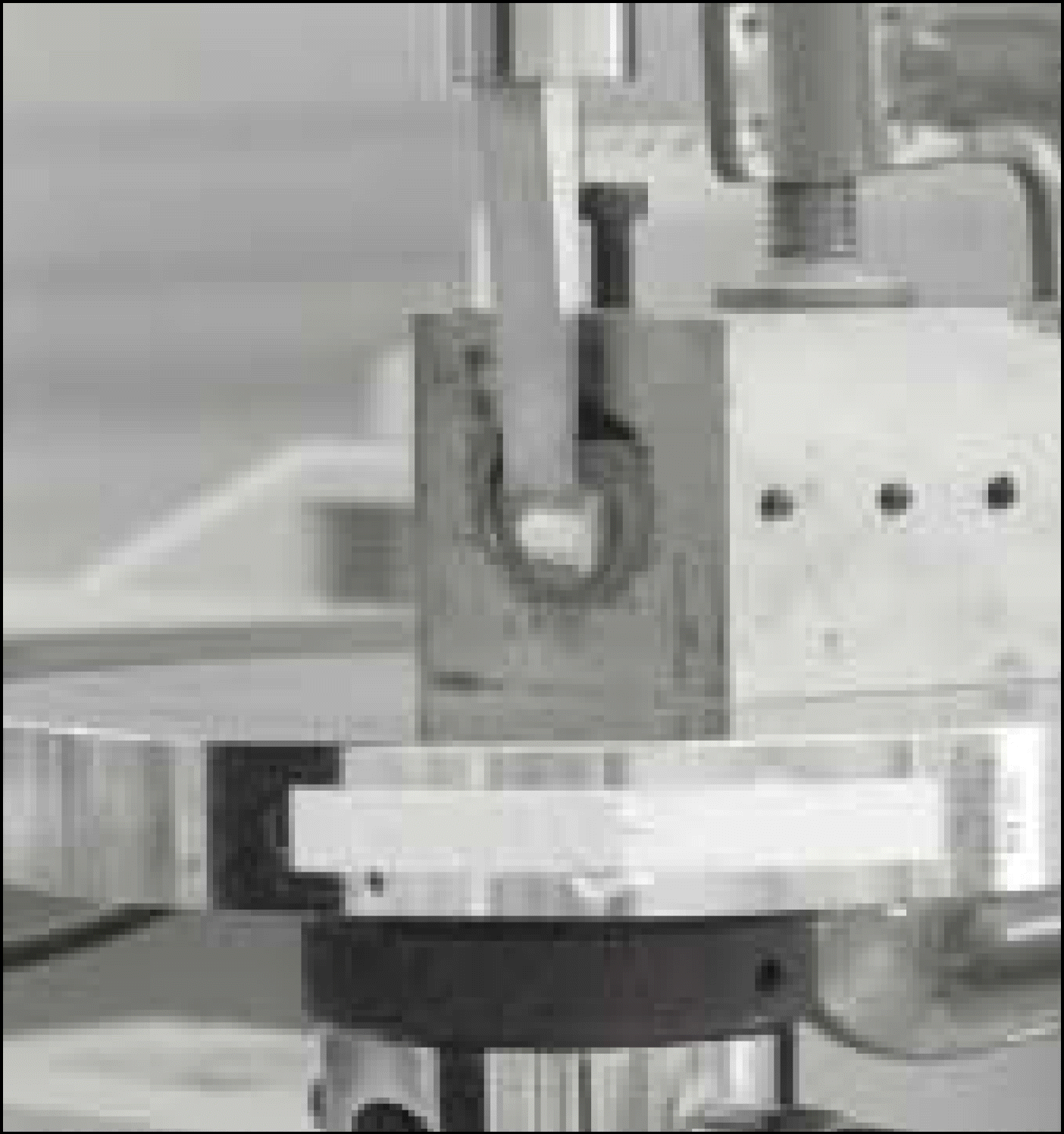
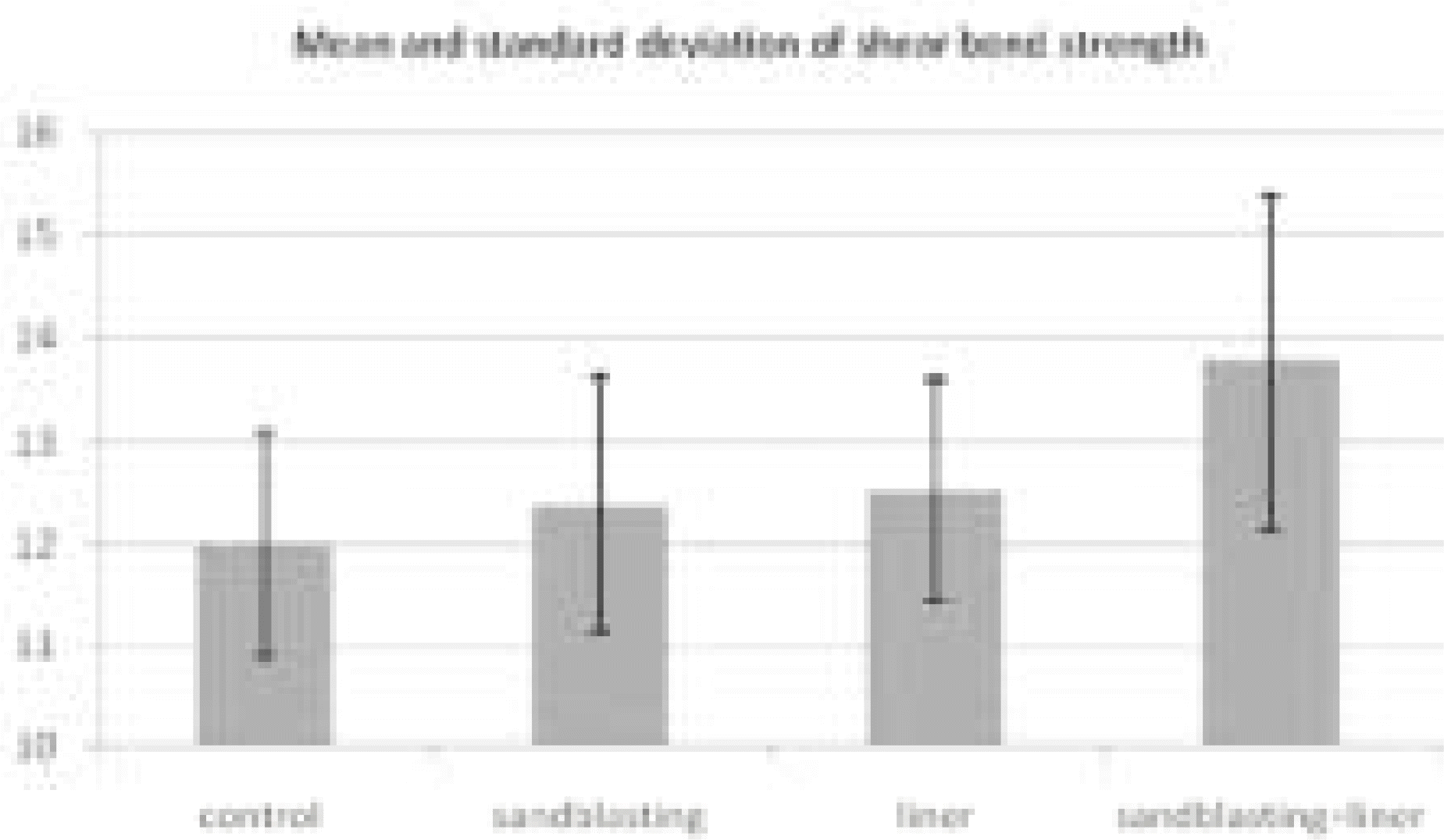
 XML Download
XML Download